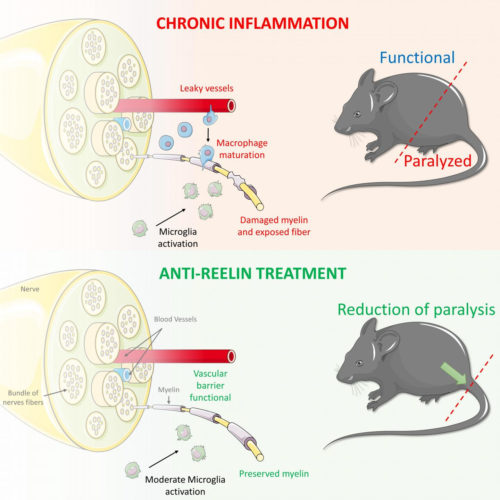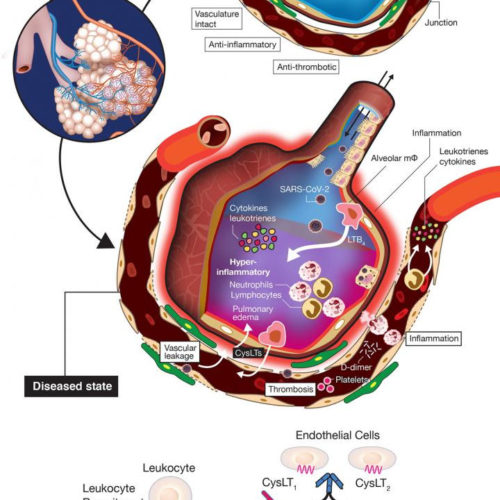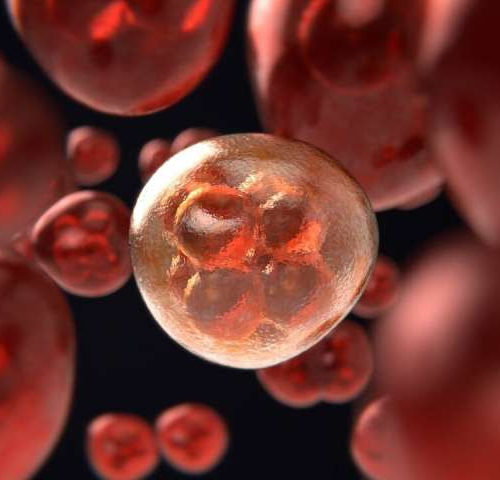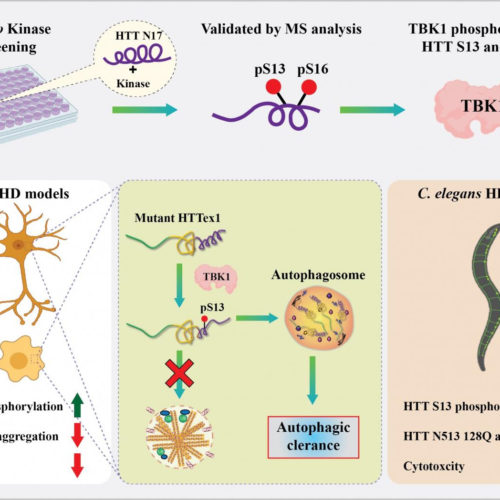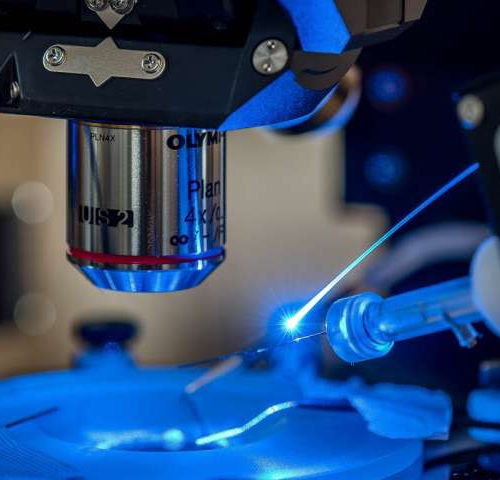by Oxford University Press A new study in Nucleic Acids Research, published by Oxford University Press, suggests a possible effective treatment strategy for patients suffering from prion disease. Prion disease is a rapidly fatal and currently untreatable neurodegenerative disease. While prion disease is quite rare, it typically causes rapid neurodegeneration. About 300 cases of prion...
Tag: <span>Therapeutics</span>
The behavior of therapeutic antibodies in immunotherapy
by CNRS Human antigen CD20 molecules (blue and pink) expressed on the surface of B cells are recognised by type 1 (green), and type 2 (orange) therapeutic antibodies. Only type 1 antibodies can potently recruit complement C1 component (light brown) to elicit complement pathway. Credit: Nicolas Reyes Since the late 1990s, immunotherapy has been the...
Probe detects the destruction of defective mitochondria
by RIKEN Figure 1: Colored transmission electron micrograph of a single mitochondrion in a human pancreas cell. RIKEN researchers have developed a fluorescent probe that can detect the programmed death of defective mitochondria in the lysosomes. Credit: K.R. PORTER/ SCIENCE PHOTO LIBRARY A versatile probe that can detect with pinpoint accuracy the programmed destruction of...
Smartwatch Tracks Levels of Medication in the Body for Personalized Dosing
Researchers at the UCLA Samueli School of Engineering and the Stanford School of Medicine have developed a smartwatch that uses electrochemical analysis to track levels of a drug in the body by analyzing a patient’s sweat. The system could help with finding the correct drug and dose for a given patient in order to maximize...
‘Reelin’ in a new treatment for multiple sclerosis
Depleting key protein could protect against conditions marked by chronic inflammation UT SOUTHWESTERN MEDICAL CENTER ANTI-REELIN IS A THERAPEUTIC APPROACH THAT SELECTIVELY TARGETS THE VASCULAR BARRIER, BLOCKING INFILTRATION OF INFLAMMATORY CELLS, DEMYELINATION AND, CONSEQUENTLY, PARALYSIS. view more CREDIT: UT SOUTHWESTERN MEDICAL CENTER DALLAS – Aug. 12, 2020 – In an animal model of multiple sclerosis...
U of T researchers discover how to get more cancer-fighting nanoparticles to where they’re needed
Researchers in the University of Toronto’s Faculty of Applied Science & Engineering have discovered a dose threshold that greatly increases the delivery of cancer-fighting drugs into a tumour. The findings, published recently in the journal Nature Materials, provide a potentially universal method for gauging nanoparticle dosage and could help advance a new generation of cancer...
Novateur Ventures explores new strategy to reduce hyperinflammatory response caused by COVID-19
VASCULAR LEAKAGE, INFLAMMATION-PROVOKING, AND THROMBOTIC EVENTS IN CORONAVIRUS DISEASE 2019 view more CREDIT: NOVATEUR VENTURES A novel strategy has been developed by Novateur Ventures, which provides new hope in battle against COVID-19. The study titled ‘A Novel Strategy to Mitigate the Hyperinflammatory Response to COVID-19 by Targeting Leukotrienes’ was published in Frontiers in Pharmacology, a...
Scientists identify new target for wide array of cancers
by Brian Wallheimer, Purdue University Many types of human cancers exhibit changes in kinase and phosphatase balances. Drugs that inhibit kinase activity have shown success in the clinic as cancer therapeutics, but the phosphatases still remain a largely underexploited target class due primarily to the lack of understanding of how they cause diseases. Purdue University’s...
Discovery shows promise for treating Huntington’s Disease
Scientists at EPFL’s Brain Mind Institute have identified an enzyme that can play a central role in developing a new route of treatment for Huntington’s Disease. ECOLE POLYTECHNIQUE FÉDÉRALE DE LAUSANNE USING AN IN VITRO KINOME SCREEN, THE LAB OF HILAL LASHUEL AT EPFL IDENTIFIED A NOVEL KINASE (TBK1) THAT PHOSPHORYLATES THE HUNTINGTIN PROTEIN AT...
REM sleep tunes eating behaviour
by University of Bern Using a technique called optogenetics, the activity of cells in the brain can be specifically suppressed with light pulses. Credit: Pascal Gugler / Insel Gruppe Despite our broad understanding of the different brain regions activated during rapid-eye-movement sleep, little is known about what this activity serves for. Researchers at the University...





